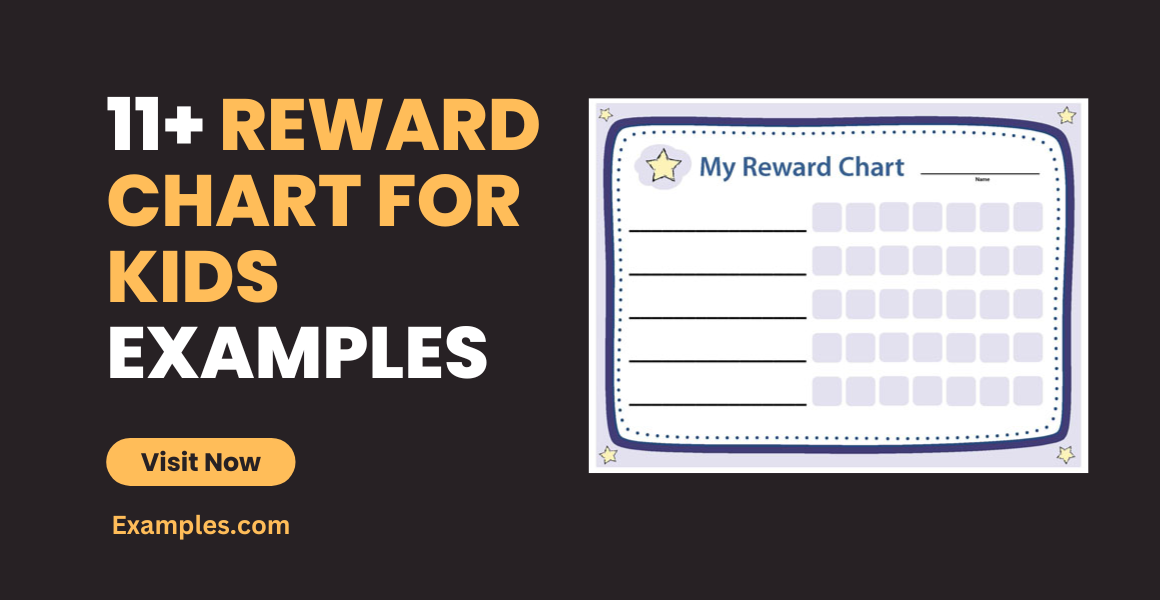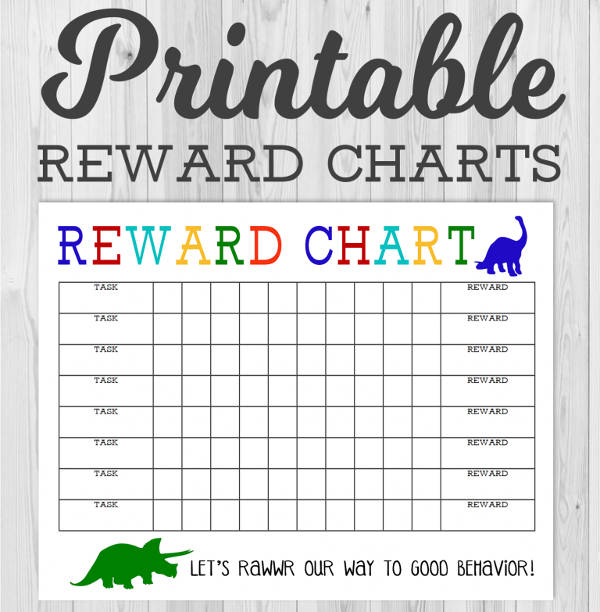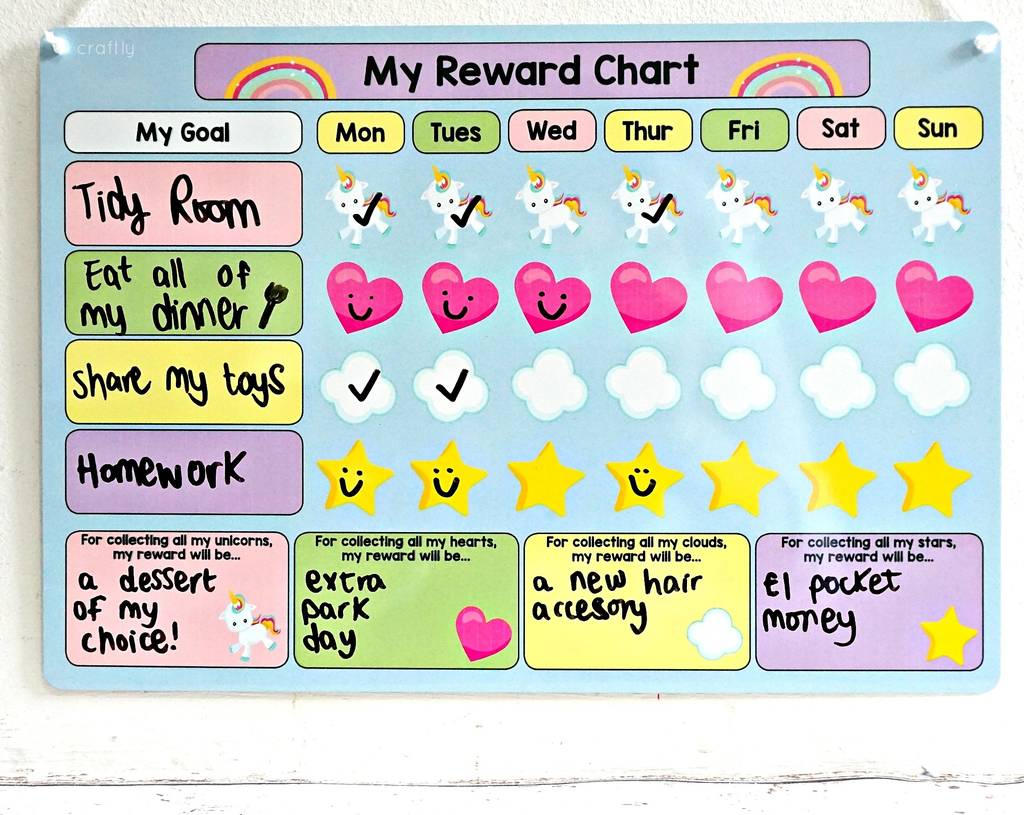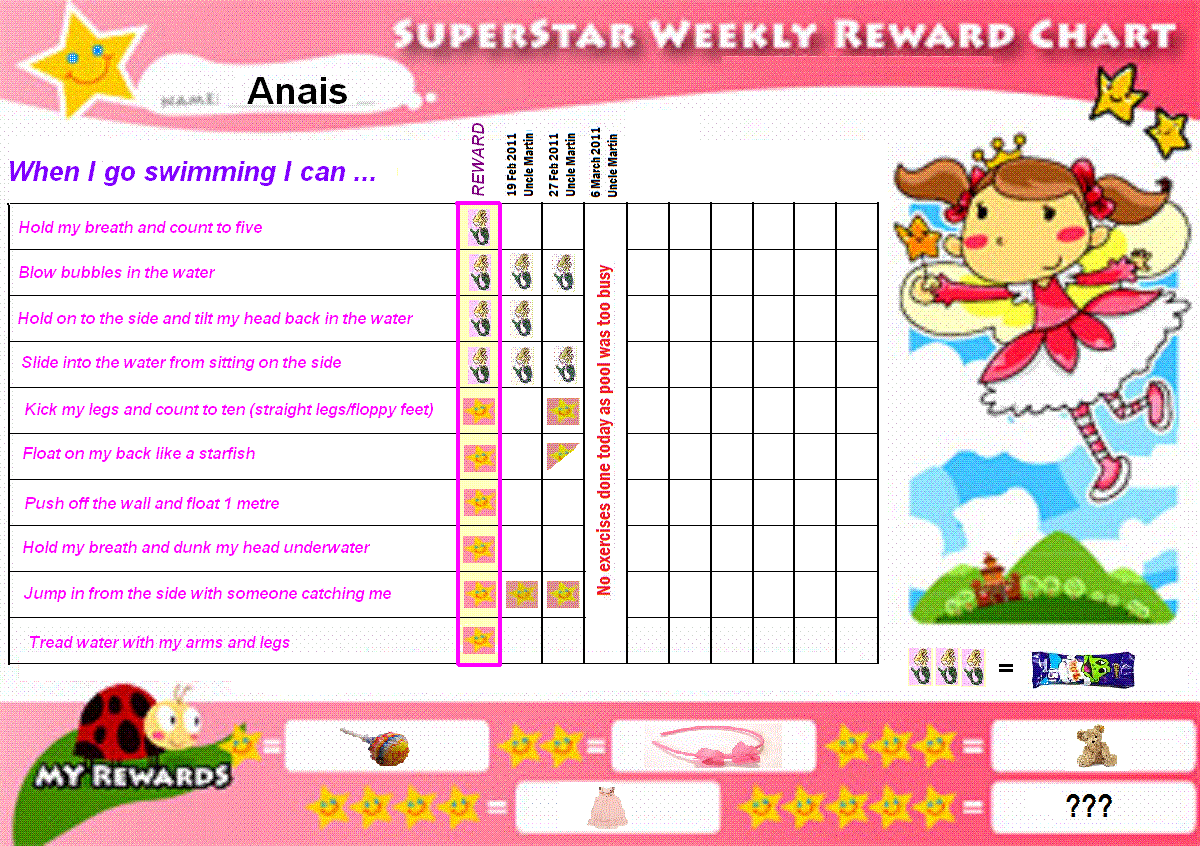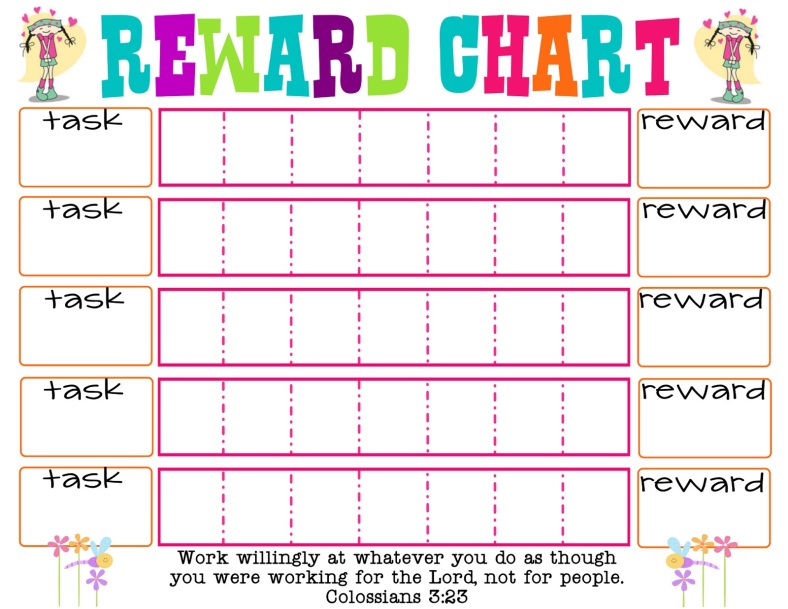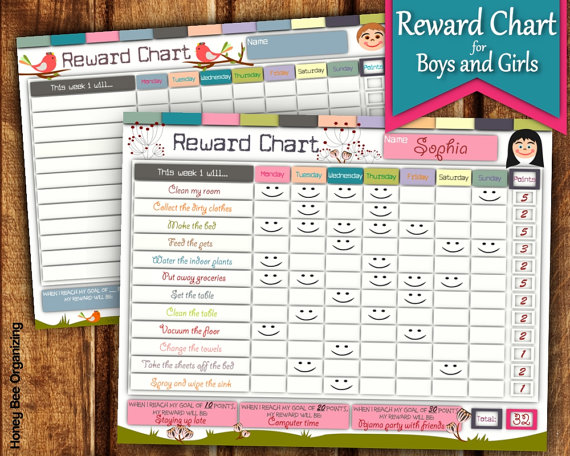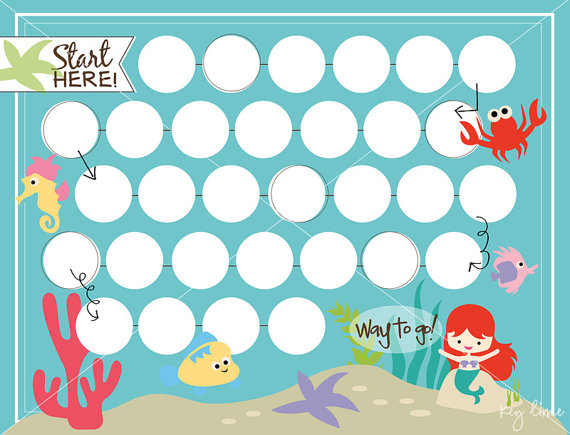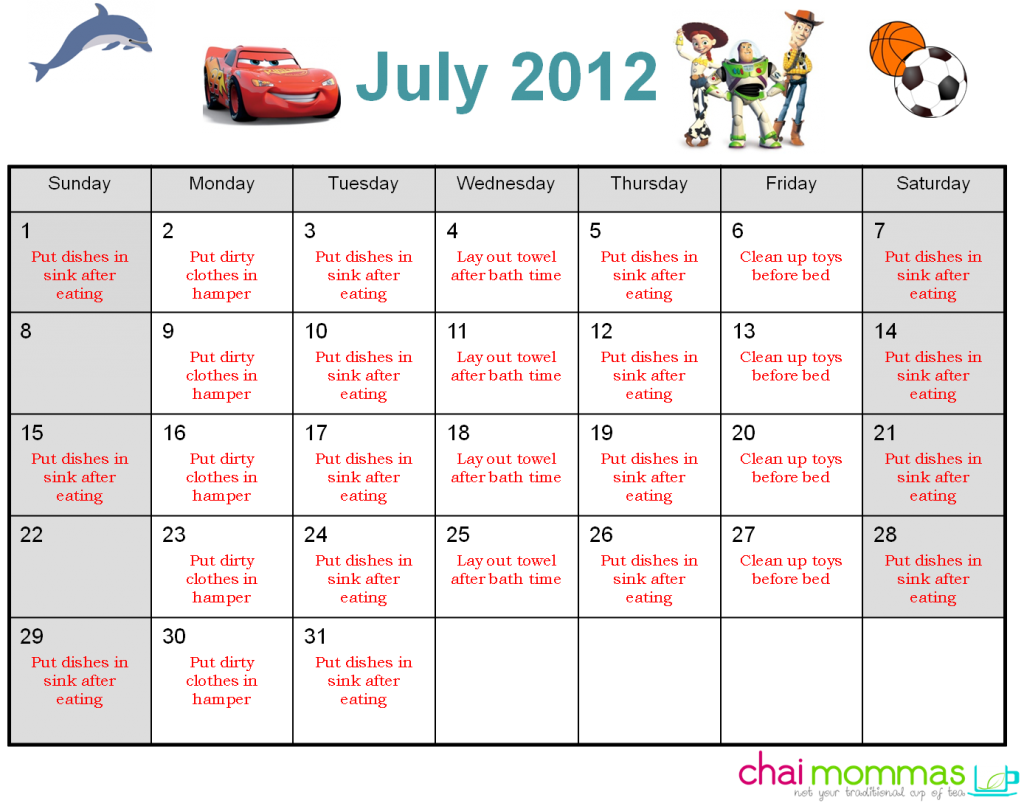11+ Reward Chart for Kids Examples to Download
Positive reinforcement is an effective way to encourage good behavior and responsibility. This is a technique that parents use to teach their kids fine values. Through constant praise and attention as a reward for small achievements like brushing teeth or finishing homework before bedtime, parents instill within their kids the importance of being good and doing good. You may also see daily chart examples & samples.
A reward chart is a way for a parent to track the behavior of the child and show him, in a way that he can understand, his performance and behavior. A reward chart often include stickers that the child will receive every time he has done something good. You may also like measurement chart examples.
When he has accumulated enough stickers to reach the top of his chart or to fill it, he can then receive a treat or an outing as a reward. This can result in the child wanting to perform well in everything because he will be encouraged by the stickers that he will receive if he does. You may also check out food chart examples.
A reward chart, aside from reinforcing good behavior, also punishes the bad. Whenever your child has done something wrong or if he has been particularly naughty, remove a sticker from his general chart and let him understand that there are always consequences to bad behavior so that he can learn to avoid doing them.
This is an effective way for you to admonish your child without having to inflict physical or emotional pain. It is also helpful in making your child understand, even at a young age, the way the world works.
Reward Chart for Kids Template
Adorable Reward Chart for Kids
Potty Training Reward Chart
Where Did the Idea of a Reward Chart Come From?
The concept of the reward chart has sprung up from the habit of people to do things—both good and bad—as long as there is a reward or a prize waiting for them at the end of it.
A good and common example of this are Monday mornings. Even if you stayed out late with friends the night before and you would want nothing but to sleep the entire day, you would still get up and prepare for work because doing so would mean that you’ll get a reward in the form of your paycheck. You may also see comparison chart examples.
This is a simple yet very effective idea that is applicable to people of any age. You might not know it but everything you are doing to yourself and your life is actually motivated by a compensation. You go to the gym instead of idling the whole day because you’d get the body you want if you keep doing so. You study and read even if you don’t want to because you’d get good grades in the end. You may also like temperature chart examples.
If the concept of action = reward has worked on level-headed adults, imagine what help it would be to kids who are content in simply receiving stickers?
How Does a Reward Chart Work?
It is important to design a simple chart in a way that gives the child something to hope and aim for. Which is why there should be a designated number of stickers that a child can exchange for a tangible reward. Usually, parents give these rewards after five or ten stickers. After that, the kid can ask for anything he wants, or he and his parents can agree on a reward before the sticker-giving starts.
If there are multiple kids in the family, a reward chart for each one should be made. However, if there is some sort of sibling rivalry going on between the children, then they should be given one reward chart to share. This can cause them to want to work together to earn stickers instead of competing against each other. You may also check out chart note examples.
Reward charts are also very helpful in introducing new ways to bond between siblings and to quell any competition going on between them.
Colorful Children’s Reward Chart
Superstar Reward Chart
Printable Reward Chart
For older kids who refuse to go through the humiliation of being treated like a baby, instead of using reward charts, you can use reward towers. For this one, instead of using stickers, you will make use of marbles in a jar. For every good behavior your child portrays, he will be given a marble until it reaches the designated number for exchanging into tangible rewards. You might be interested in music chart examples.
As for the rewards, avoid giving sugary treats or chocolates to your kids. A family outing is always the best option since it also encourages quality time with the family, plus, it is the healthiest option. (At least, in comparison to junk food and sweets.) However, if outings are not always possible, you can also choose to cook your child’s favorite dinner or take the family out for a good tasty meal.
Rewards should, as much as possible, not be material things, like toys or gadgets, because this may spoil the child. Also, we don’t want his good behavior to be a sole product of materialism. We want the child to learn that good behavior will be reciprocated by good relationships and not material riches. You may also see diet chart examples.
A reward chart should be categorized. You must specify the activities that your child can do that can merit himself a sticker. You can also use pictures, drawings, and other colorful illustrations for younger kids to make the chart look more interesting and jolly. You may also like medical chart examples.
Your chart can include simple achievements like cleaning his own room, fixing his bed, or eating everything on his plate, to big attainments like getting good grades or doing his homework.
Simple Reward Chart
Printable Reward Charts for Girls
Printable Reward Chart for Boys and Girls
Ideas for Making Your Own Reward Chart
You can make a reward chart as creative and as interesting as you can make it. This way, the activity will be more like a game than a chore to your child. Here are some suggestions you can adapt for your reward chart:
1. If your child is more on the artistic side, you can incorporate art into your reward chart. This can make it more engaging for him. If your child loves drawing, you can make a dot-to-dot chart where you can make your child draw one line for every accomplishment, and erase one line for every bad behavior. You may also see price chart examples.
2. Instead of a dot-to-dot chart, you can also make it a color-by-number chart where your child can color a part of the chart of every good deed and, after he’s colored it all, a picture will be formed.
3. An adorable alternative to a reward chart is a reward box where you can place some rubber animal toys. Whenever your child does something good, he gets the chance to fish one toy from the box. Four toys would “buy” him a treat or an outing. You may also like monthly chart examples.
4. You can also use a reward chart as a list of instructions for your kids in the mad hour before school. This can help you avoid continually stressing about them and their preparations for the day. Plus, it will teach your kids to take responsibility for themselves. Every night, before bed, you can check the tasks they were able to finish themselves, like brushing their teeth and putting on their uniform, and reward them for it. You may also check out metric conversion chart examples.
Don’t feel scared by the thought of being a little more creative with your reward charts. If you find it difficult to make one yourself, there are a variety of chart templates and samples we have posted in this article to help you! Remember, every reward chart is a chance for you to teach your kids about responsibility and good deeds, and a chance for you to bond. For such a good cause, your efforts in creating one will be worth it.
Underwater-Themed Reward Chart
Reward Chart Template
Cartoon-Inspired Reward Chart
Important Things to Remember about Reward Charts
Through the years of reward charts being used by parents, there have been contesting opinions about it. Many say that it doesn’t work and that it trains the kids to only do good if they are being rewarded for it. You may also see color chart examples.
However, there are also parents who say that reward charts have helped them motivate the behavior of their child. This only goes to show that, like everything else, reward charts may or may not work for certain situations.
Reward charts will not remove the bad behavior of a child altogether, but it can help alleviate it by training him to understand that his attitude has positive and negative consequences. This is why reward charts are a very effective tool in parenting. That is, if you are using the appropriate method of implementing it. You may also like size chart examples.
To make sure that you are going to get the best out of this method, here are tips and suggestions you can take note of:
1. Clarify and identify the behavior of your child that you are aiming to change.
There may be more than a thing or two that you want your child to learn, but it is important to avoid overwhelming the child with all of it all at once. Recognize the behavior that you want your child to practice and design your reward chart according to it. Say you want your child to learn self-responsibility. So your chart should include tasks like “get dressed for school” or “prepare school bag before sleeping”. You may also check out exercise chart examples.
Once your targeted behavior has been regularly and consistently performed, you can then proceed to other attitude.
2. Decide on the prize ahead of time.
Unless you want to surprise your child with something big like going to Disneyland, picking the prize for all of your child’s hard work is considered to be more effective. Your child would also enjoy the activity more if he actually has a choice in what he will get when he finishes it. This can also help you set a limit for the prize. You might be interested in growth chart examples.
Of course, you wouldn’t want to be too lavish or too frugal. So instead, you and your child can agree on a prize that he will love without you having to spend too much on it.
3. The prizes should be achievable within a short amount of time.
Otherwise, your child may lose interest in it. It is also important that the number of tickets that your child needs to attain to get the reward is realistic. Don’t make him earn 100 tickets for 6 months even if the reward waiting for him is the latest iPhone. You may also see organizational chart examples.
Chances are he won’t be patient enough to wait and work that long, and your activity will be deemed ineffective. The trick with reward charts is to aim for things one small piece at a time.
4. Use meaningful rewards and display them for your child to gape at.
Once you and your child have decided on a prize that he wants, buy it and show it to him. Regularly seeing the prize you are working toward can motivate you to work harder. This is also true for a child. Most especially if the reward is something he wants so much, your child will exhibit a more positive and more persistent behavior just to get it. You may also like chore chart examples.
Training and teaching a child to become a good person—which is every singular parent’s goal—is easier said than done. A parent will have to go through so many berating and mischief and headaches to get there. You may also check out blood chart examples.
A reward chart will not make the results instantaneous, nor can it make the process completely stress-free. But it can make it more engaging and fulfilling both for the parent and the child.


